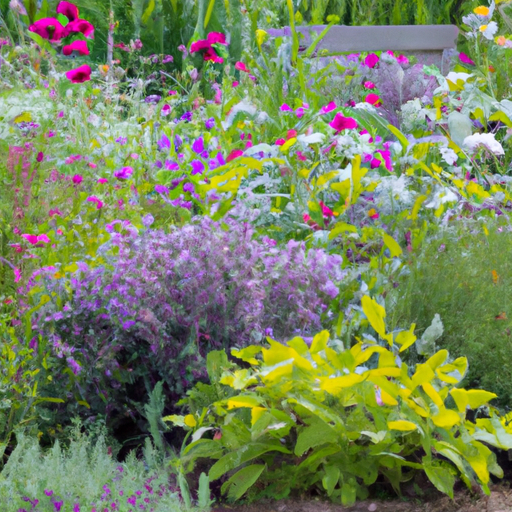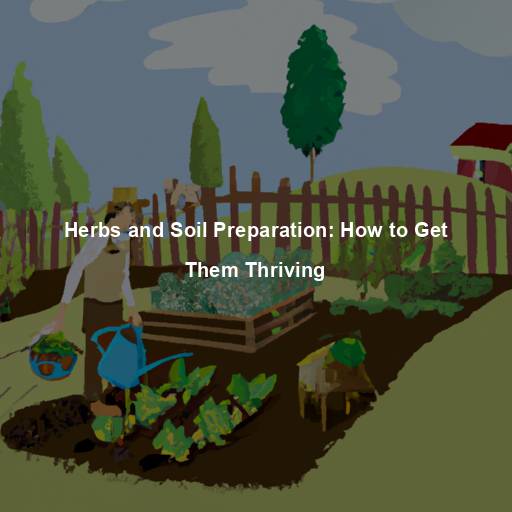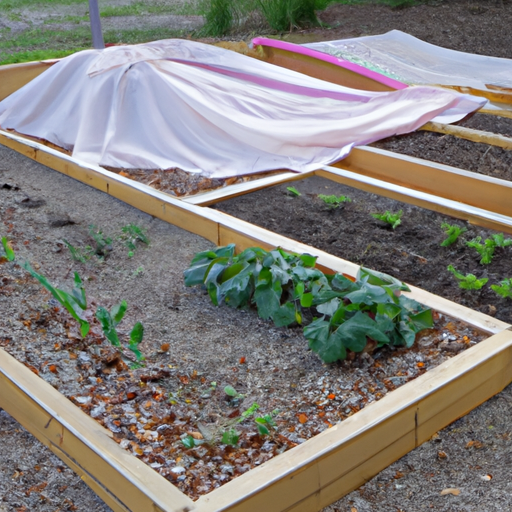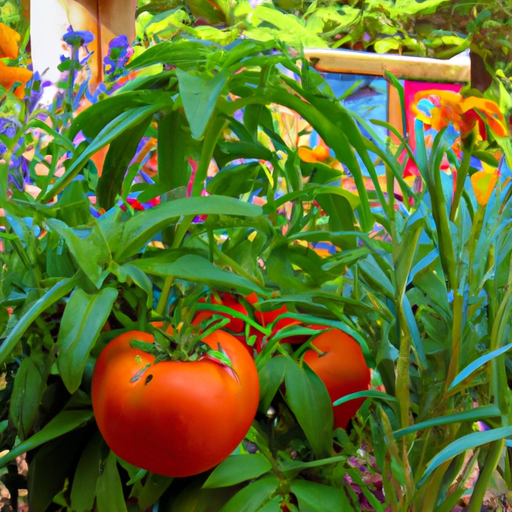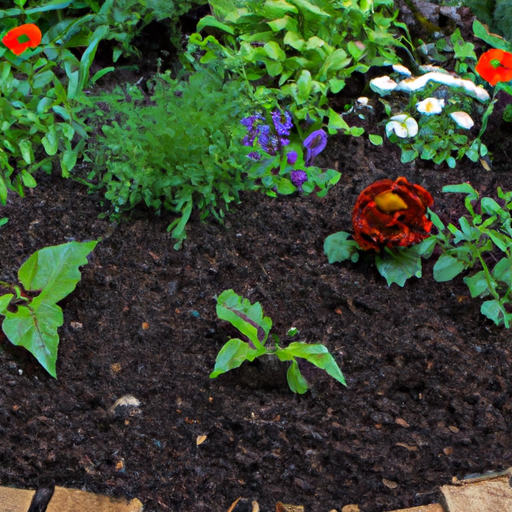Companion planting is a practice that has been used for centuries, and it involves planting different species of plants together for the benefits they offer to each other. This technique can improve soil health, reduce pest problems, and increase crop yields while promoting biodiversity in the garden.
As a Master Gardener who has witnessed firsthand the positive impact companion planting can have on both gardening success and sustainability efforts, I am excited to share my knowledge about this topic.
Companion planting offers numerous advantages beyond traditional monoculture farming practices. It encourages mixed plantings that mimic natural ecosystems by creating synergies between plants through mutualistic relationships. These mutually beneficial inter-species interactions enhance soil quality by increasing nutrient availability and improving water retention capacity.
Companion planting also reduces weed growth and pest infestations without relying on chemical pesticides or herbicides. By implementing these sustainable growing techniques, we not only promote plant growth but also support insect pollinators such as bees and butterflies, ultimately contributing to a flourishing ecosystem.
Understanding The Benefits Of Companion Planting
Like the harmony in a symphony, companion planting combinations can create beautiful and productive garden landscapes.
As a Master Gardener, I have seen firsthand the benefits that come from strategically pairing plants to maximize garden space and promote biodiversity.
Companion planting not only enhances the aesthetic appeal of your garden but also improves soil health, increases pollination rates, and reduces pest infestations.
By selecting plants that complement each other’s growth habits and nutrient needs, you can achieve higher yields while reducing the need for synthetic fertilizers or harmful pesticides.
With so many advantages to gain from this practice, it is no wonder why companion planting has become an essential tool for promoting sustainability in agriculture.
Creating A Biodiverse Garden Through Companion Planting
To create a biodiverse garden through companion planting, it’s important to consider maximizing yields and implementing seasonal companion planting strategies.
By pairing plants that complement each other, you can not only increase the productivity of your garden but also improve its overall health and resilience.
For example, planting beans alongside corn creates a mutually beneficial relationship where the beans fix nitrogen in the soil for the corn while using the stalks as support.
Similarly, interplanting marigolds with tomatoes can deter pests and attract pollinators.
It’s essential to research which plant combinations work best together based on their growth habits, nutrient requirements, and compatibility with one another.
By following these practices and incorporating diverse plant species into your garden design, you’ll be contributing to biodiversity while promoting sustainability in your growing space.
Improving Soil Health With Companion Planting Techniques
As we discussed in the previous section, creating a biodiverse garden through companion planting is essential for promoting biodiversity and sustainability.
Now, let’s explore how companion planting can also improve soil health.
One of the major benefits of companion planting is that it helps to increase crop yield by attracting pollinators and beneficial insects.
Additionally, certain plants have been found to work well together by complementing each other’s nutrient needs – this means they help absorb nutrients from the soil more effectively than if they were grown alone.
For example, legumes like peas or beans are known for their ability to fix nitrogen into the soil, which can benefit neighboring plants such as corn or tomatoes that require high levels of nitrogen.
By utilizing these techniques in your garden, you will not only be improving soil health but also promoting a thriving ecosystem where all plants work together harmoniously.
So don’t hesitate to experiment with different combinations of plant species and see how they interact – your garden (and the planet) will thank you!
Reducing Pest Problems With Natural Solutions
As a Master Gardener, I always recommend using natural solutions to reduce pest problems in your garden. Organic alternatives are not only better for the environment but also safer for you and your family.
Companion planting combinations can be an effective way to naturally deter pests from your garden without the use of harmful chemicals. For example, planting marigolds next to tomatoes can help repel nematodes, while interplanting beans with corn can attract beneficial insects that prey on pests like aphids.
Additionally, rotating crops each season can prevent certain pests from becoming too comfortable in one area of your garden. By implementing these natural solutions, not only will you have a healthier and more sustainable garden, but you’ll also be doing your part in promoting biodiversity and protecting our planet’s precious ecosystem.
Promoting Sustainability Through Companion Planting Practices
As we saw in the previous section, reducing pest problems with natural solutions is crucial for a healthy garden. However, it’s not just about getting rid of pests – promoting ecological balance and maximizing yield are also important factors to consider.
This is where companion planting comes in. By strategically placing different plants together, you can create a more diverse ecosystem that supports beneficial insects and microorganisms while deterring harmful ones. This leads to healthier soil, better nutrient uptake, and ultimately higher yields.
Additionally, companion planting can help reduce the need for synthetic fertilizers and pesticides, making it an eco-friendly choice for sustainable gardening practices. So if you want to take your garden to the next level of biodiversity and sustainability, try incorporating some companion planting techniques into your plan!
Frequently Asked Questions
How Can Companion Planting Be Used In Larger Agricultural Settings?
Did you know that crop rotation has been used for thousands of years? It’s a simple and effective way to replenish soil nutrients and prevent disease buildup.
But what about intercropping strategies? This is where companion planting comes in. By strategically placing different crops together, farmers can increase yields, reduce pest damage, and improve overall soil health.
In larger agricultural settings, companion planting can be used on a massive scale by utilizing technology such as GPS mapping to optimize plant placement.
As a Master Gardener, I highly recommend incorporating companion planting into any farming operation seeking to promote both biodiversity and sustainability.
What Are Some Common Mistakes To Avoid When Implementing Companion Planting?
When it comes to implementing companion planting, there are a few common misconceptions that should be avoided.
Firstly, understanding the benefits of this technique is crucial for success. Companion planting can help improve soil health, control pests and diseases naturally, and increase biodiversity in your garden.
However, one mistake many gardeners make is assuming that any two plants will benefit from being planted together. It’s important to research which plants have complementary relationships before pairing them up.
Additionally, some people believe that companion planting alone will solve all their gardening problems without addressing other factors like irrigation or fertilizer use.
Overall, with a little bit of knowledge and careful planning, incorporating companion planting into your garden can lead to healthier plants and more sustainable growing practices.
Are There Any Companion Planting Techniques That Should Not Be Used Together?
When it comes to companion planting, it’s important to be aware of soil compatibility and plant growth interference. Some techniques may seem like a good idea at first glance but can actually harm your plants in the long run.
For example, planting beans with onions is not recommended as they both prefer different soil pH levels. Similarly, planting mint with other herbs can lead to stunted growth due to its tendency to spread rapidly and take over neighboring plants.
As a Master Gardener, I always recommend researching each plant’s individual needs before pairing them together in order to ensure a healthy and thriving garden.
How Can Companion Planting Be Used To Attract Beneficial Insects To The Garden?
To attract beneficial insects to your garden, companion planting is an effective strategy.
By growing plants that provide food and shelter for pollinators, you can increase the diversity of insect species in your garden and improve yields.
Some examples of plants that attract pollinators include marigolds, zinnias, and sunflowers.
Additionally, intercropping herbs such as basil or oregano with vegetables like tomatoes or peppers can also help deter pests while attracting beneficial insects.
To maximize yields and create a healthy ecosystem in your garden, consider incorporating companion planting techniques into your gardening practices.
Can Companion Planting Be Used To Control Weeds?
Companion planting is an effective method for controlling weeds and improving soil health, which ultimately leads to higher crop yields.
In fact, research has shown that companion planting can reduce weed growth by up to 50%.
By growing certain plants together, they can work in harmony to naturally suppress the growth of unwanted weeds without the use of harmful chemicals or herbicides.
Additionally, companion planting promotes healthy soil by increasing microbial activity and nutrient availability.
This all contributes to a more sustainable garden ecosystem with healthier plants and higher yields.
As a Master Gardener, I highly recommend incorporating companion planting into your gardening practices for optimal weed control and improved soil health.
Conclusion
In conclusion, as Master Gardeners, we understand the importance of companion planting in fostering biodiversity and sustainability.
When implemented correctly, this technique can be used not only in small home gardens but also on larger agricultural settings to promote healthy ecosystems and reduce the need for harmful pesticides.
However, it is important to avoid common mistakes such as planting incompatible companions or overcrowding plants.
By using a thoughtful approach and selecting compatible plant combinations, gardeners can harness the power of beneficial insect attraction and weed control through companion planting.
Let us continue to explore the possibilities of this valuable technique and promote sustainable practices that benefit both our gardens and our planet.
